To listen to RTÉ.ie's radio and podcast services, you will need to disable any ad blocking extensions or whitelist this site.

0
00:00
00:00
Episode Notes
Panel: Richard Collins, Éanna Ní Lamhna & Niall Hatch
Reporter: Terry Flanagan
In addition to listening to us on RTÉ Radio One at 22:00 every Monday night, don't forget that you can also listen back to each of our programmes any time you like at https://rte.ie/mooney. There, you will find an extensive archive of past broadcasts, conveniently split into different topics and segments.
Tonight’s programme features one of our favourite animals of all time, the giraffe. Our suggestion from the Mooney Goes Wild archives this week, therefore, is a documentary we broadcast in December 2022 that Derek made about the first giraffe ever to set foot on French soil, back in 1827.
Her name was Zarafa and she was a diplomatic gift to King Charles X of France from Muhammad Ali Pasha of Egypt. Following a lengthy sea voyage, then a 41-day trip on foot from the southern port of Marseilles, she took up residence in the Jardin des Plantes in Paris, an object of wonder and curiosity. Then, following her death 18 years later, she enjoyed a second 'life’ as a stuffed specimen in the foyer of the main building.
This special documentary follows Zarafa’s fascinating story, from her early days roaming the lush savannahs of Sudan with her mother, her capture and international celebrity and her subsequent descent into obscurity, right through to her eventual resurrection as the centrepiece exhibit in the La Rochelle Natural History Museum. It also discusses the plight of giraffes today and the efforts underway to conserve them in their native Africa, as well as sheds some light on the hidden lives of these larger-than-life creatures.
To listen back to this documentary, Zarafa the Giraffe, from the Mooney Goes Wild archives, visit
https://rte.ie/radio/radio1/clips/22190081/
Giraffes are supremely elegant and graceful . . . until it’s time to have a drink

Looking forward to the items to be covered in tonight’s programme, our panellists talk about one of their favourite creatures: the Giraffe. There are actually several different forms of giraffe native to Africa, all sharing immensely tall necks, very long legs, intricately patterned coats . . . and, let’s face it, a ridiculous-looking way of drinking. As Richard Collins describes for us, the manner in which our planet’s tallest land animals must splay their legs – essentially looking as though they are trying to do the splits – to reach down to quench their thirst is downright bizarre. Giraffes are certainly very elegant, graceful creatures . . . just not when they are drinking.
For more information about how Giraffes drink water, visit
https://insidescience.org/news/how-do-giraffes-drink-water
Going "Nuts about Nature" for SPAR National Tree Day
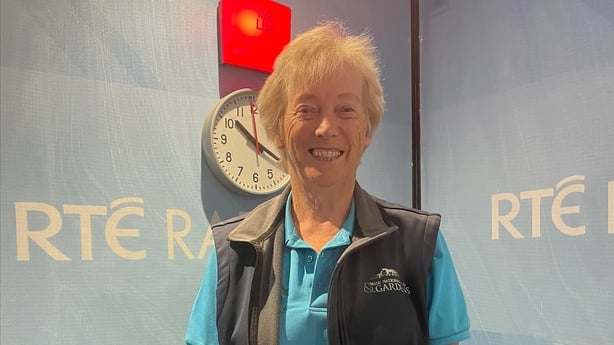
We all know how excited Éanna Ní Lamhna gets about trees, and who can blame her? Native trees are crucial for a healthy environment and the protection of biodiversity, and they also help to reduce the risk of flooding, produce oxygen and remove carbon dioxide and other pollutants from the air. What’s not to love?
Despite the vital importance of trees, Ireland has one of the lowest levels of tree cover of any European country. As Éanna tells us on tonight’s programme, this is something that SPAR National Tree Day, which this year takes place on Thursday 5th October, aims to tackle. Each year, to mark the occasion, a different species of tree is given free to schools across the country, in the form of saplings to plant on school grounds or in pots in the classroom. If you had collected every one of them over the past few years, you would have your own native arboretum by now!
With this year’s theme for National Tree Day being "Nuts about Nature", there are no prizes for guessing that the star of the show this time around is the Hazel tree. This native tree is very common in Ireland, producing crops of hazelnuts which are ripe by August. These are quickly gathered by Red Squirrels, which love them . . . so it is a particularly popular choice with the mascot of National Tree Day, Sammy the Squirrel.
Hazel trees support lots of other living things besides squirrels. Many species of bird nest in their branches. Lichens grow on the bark and branches and 140 species of lichens have been counted growing on Irish hazel trees. Insects love the tree too: 73 different species were recorded on Hazel trees. It is truly a fantastic tree for biodiversity and, best of all, you can get a free one for your school!
For more information about National Tree Day and how schools can claim their free Hazel sapling, visit
How many species of bee do we have in Ireland?
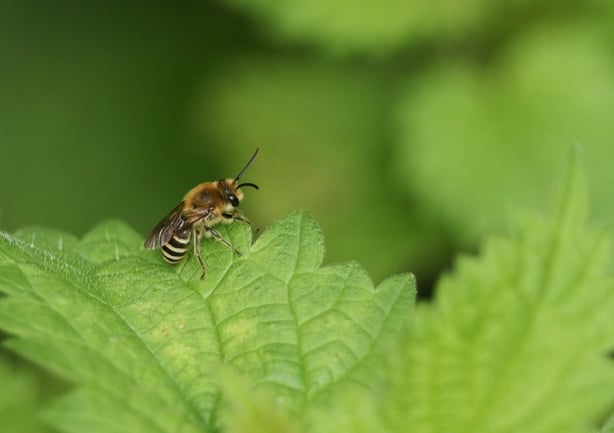
For many years on Mooney Goes Wild we consistently said that there were 99 species of Bee in Ireland. Bees can fly, of course, which allows them to move to new areas when environmental conditions become suitable for them. In recent years, two new species of bee have done just that, expanding their range across the Irish Sea from Britain and beginning the colonisation of this island.
These two new arrivals – the Ivy Bee and the Hairy-footed Flower Bee – have brought the Irish bee total to 101 . . . but can Éanna name them all? On tonight’s programme, we’ll find out!
For more information about Ireland’s 101 bee species, visit
https://rte.ie/learn/2021/0517/1222174-bees-in-ireland/
Newly arrived Ivy Bee gets naturalists buzzing
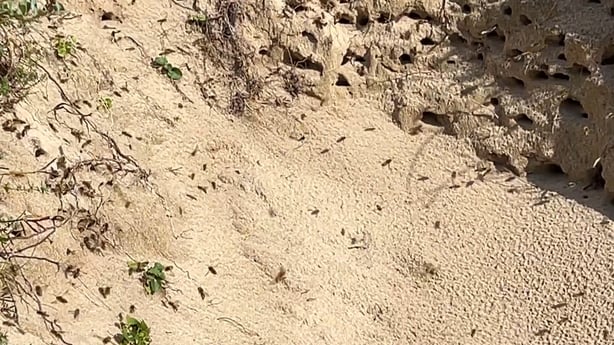
Two years ago, a new species of bee arrived in Ireland. The Ivy Bee was discovered in Co. Wexford, and since then their numbers and progress have been monitored by Prof. Francis Ratnieks. Francis, who is Professor of Apiculture in the School of Life Sciences at Sussex University, has been travelling to Ireland on a regular basis to monitor their distribution of these newly arrived insects across the country.
This time of year is a busy one for bees. The young females are emerging from their nests, and the males congregate to compete with one another to mate with them and thereby father the next generation. There is no better time, therefore, to send our Roving Reporter, Biologist Terry Flanagan, to speak to Francis about Ivy Bees. For a special report on tonight’s programme, the pair visit two locations in Co. Wexford, firstly to see the bees feeding and secondly to observe their spectacular mating behaviour.
For more information about Ivy Bees in Ireland, visit
https://biodiversityireland.ie/naturalists-buzzing-as-new-bee-arrives-in-ireland/
Celebrating Catalan wildlife: the Ebro Delta Birding Festival
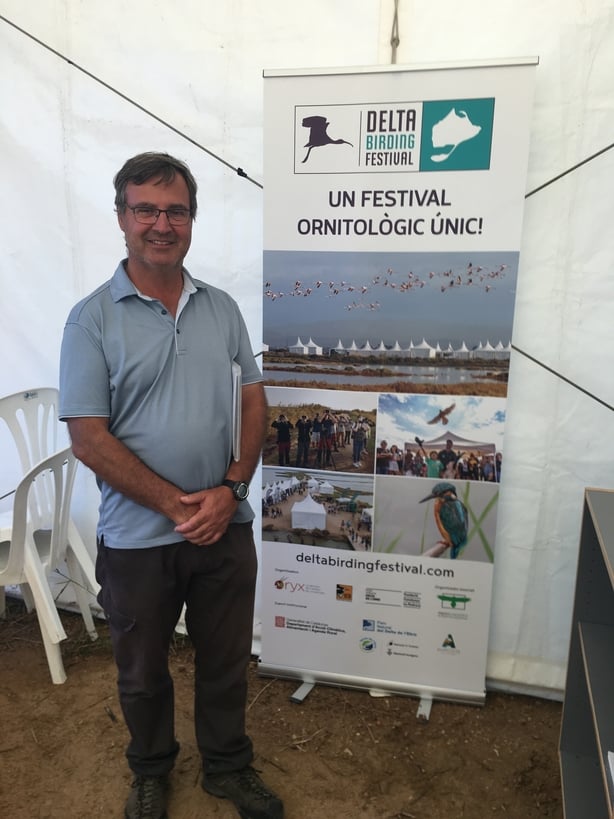
Spain’s Ebro Delta, where the mighty Ebro river meets the Mediterranean Sea in the region of Catalonia, has long been regarded as one of the finest birdwatching destinations in all of Europe. It’s also a crucial breeding site, wintering habitat and migration stop-over for enormous numbers of birds.
To celebrate the rich biodiversity of the Ebro Delta and to help local communities to benefit from the presence of so many birds, and therefore so many birdwatchers, the Delta Birding Festival was born. Last month saw the ninth annual festival take place, offering visitors a wide range of talks, field trips, workshops, competitions and a big ornithological trade fair with photographic equipment, optics, books and other products of interest to nature-lovers.
For our very own Niall Hatch, it was a must-see event, and on tonight’s programme he fills us in on the fun of the festival, the important conservation and economic benefits it brings to the region and the rich wildlife of Catalonia. He also tells us all about the amazing sight of 50,000 Glossy Ibises all flying into their nightly roost, a close encounter with a Golden Eagle and his first ever sighting of the Iberian Ibex, a species of wild goat.
Niall also speaks to Francesc Kirchner, the founder of the festival, about the event and the reasons why the Ebro Delta is such a good area for birds and for birdwatchers.
For more information about the Ebro Delta Birding Festival, visit
https://deltabirdingfestival.com/en/
Early Brent Geese in Co. Waterford?

One of our loyal listeners, Anne Hally, got in touch with the programme to let us know that, while taking a dip at Ardmore, Co. Waterford on 21st September, she spotted a flock of Brent Geese also swimming in the water. She wanted to know whether this was an exceptionally early sighting of these migrant waterfowl.
As Niall tells us on tonight’s programme, although Anne’s sighting is one of the first he has come across so far this autumn, late September is more or less when ornithologists expect the first Brent Geese to arrive on our shores after their long flights from their breeding grounds on Baffin Island in the High Canadian Arctic. Numbers continue to build through the end of September and the month of October, the geese staying with us here in Ireland until roughly mid-April, when they depart for Canada once more. So, Anne’s geese are some of the earliest to arrive, but not exceptionally so.
For more information about Brent Geese in Ireland, visit
https://birdwatchireland.ie/birds/brent-goose-light-bellied/
How clean are giraffes? Well, some of them are spotless!
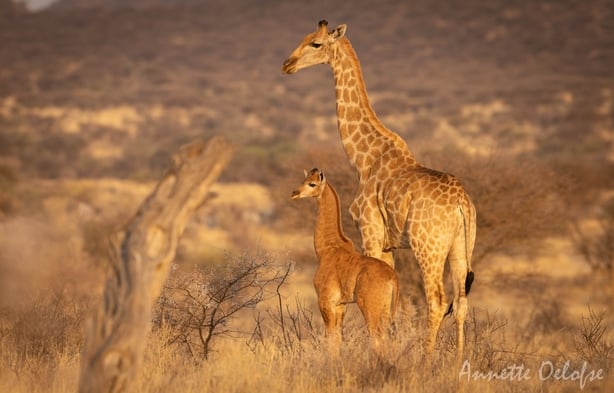
We all know what the coat of a giraffe looks like, right? Those classic spots, looking like tan crazy-paving, are utterly unmistakeable, and are responsible for part of the scientific name Giraffa camelopardalis, literally "leopard-camel flute-leg". Spots are as synonymous with giraffes as long necks, lofty legs and blue tongues.
But something extraordinary has happened. This year, not one, but two giraffes have been born without any spots at all. The first of these spotless giraffes was born in Brights Zoo in Tennessee, USA on 31st July. The only previous record of a spotless giraffe was of one born in captivity in Japan in the 1970s, so staff at the Tennessee Zoo reasonably believed that their calf was the only spotless Giraffe on the planet.
Until, that is, news broke that another spotless baby Giraffe had been spotted in Namibia last month, the first one ever seen in the wild. The unusual colouration of both of these youngsters is believed to be the result of either a genetic mutation, possibly as a result of inbreeding, or of a recessive genotype, but nobody yet knows for sure. All we can say with certainty is that they are very, very rare.
To learn more about giraffes and their colouration, on tonight’s programme we are joined by Declan O’Donovan, Animal Care Manager at Cork’s Fota Wildlife Park. Declan is an expert when it comes to Giraffes, and he tells us all about the different forms and/or species of these incredible animals, their unique adaptations for survival, the problems facing them in the wild and how the 10 Rothschild’s Giraffes (9 adults and 1 calf) currently in Fota are doing.
For more information about the spotless Giraffe calves, visit
https://nationalgeographic.com/animals/article/spotless-giraffe-found-in-the-wild-for-the-first-time
For more information about the Giraffes at Fota Wildlife Park, visit
https://fotawildlife.ie/animals-plants/rothschild-giraffe/
Welcome to Michèle Browne
Finally, we would like to extend a very warm welcome to the newest member of the Mooney Goes Wild team. Michèle Browne has recently joined us as the new Researcher on the programme, and we are absolutely delighted to have her on board. I’m sure that all of our listeners will join us in wishing her every success in her new role.
